Fall is one of the busiest times to visit North Carolina. It is a great time to visit historic sites, take scenic drives, or enjoy all that nature has to offer. This season is popular because it is when the leaves start changing colors. The lush green forests that blanket the state turn orange, yellow, red, and even purple. The fall is also a time when the Old North State experiences the most bear activity. They can be found throughout the state, but are most apparent in the mountain and coastal regions. In North Carolina, there are ten main places to encounter bears during the fall. Read on to discover all of them and explore what they have to offer bears – and people, too!
What Kind of Bears Live in North Carolina?
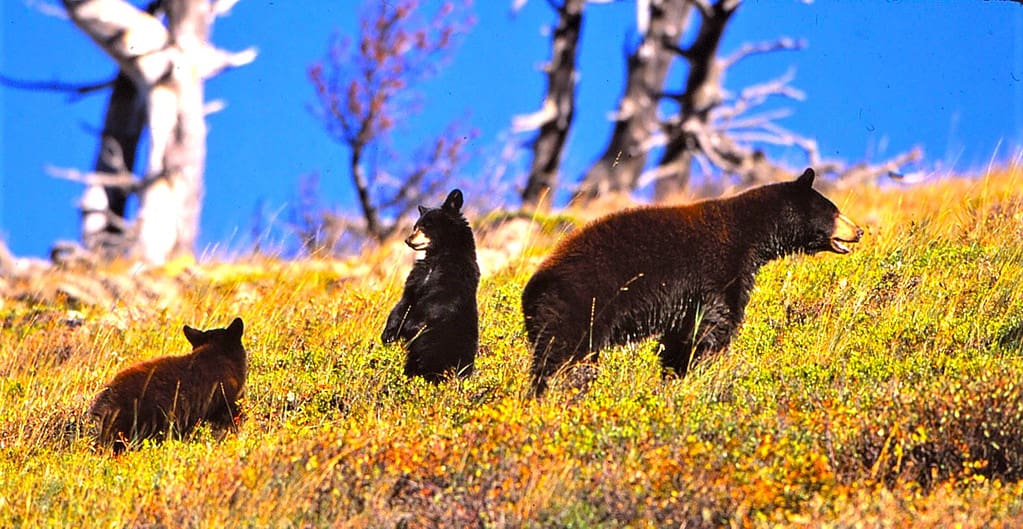
Black bear cubs learn to forage during the summer and fall seasons.
©Richard Jackson/iStock / Getty Images Plus via Getty Images
In North Carolina, black bears are the only wild bear species you can find throughout the state. It is the only bear species found in the eastern United States. Black bears in North Carolina are five to six feet long, or two to three feet tall when on all fours. Females weigh anywhere between 100 and 300 pounds, whereas males weigh between 200 and 500 pounds.
There are an estimated 15,000 black bears in North Carolina, and they are most active during the fall. This is mainly because bears experience a phenomenon called hyperphagia, which is a process that requires them to eat and drink nearly nonstop in preparation for hibernation in the winter. The fall months are considered bears’ “last chance to eat a lot”, with some staying up for nearly 20 hours each day in search of food. Many bears also look for den sites at this time. Having said that, continue on to learn about the ten places where you’re most likely to encounter bears in North Carolina during the fall.
1. Great Smoky Mountains National Park
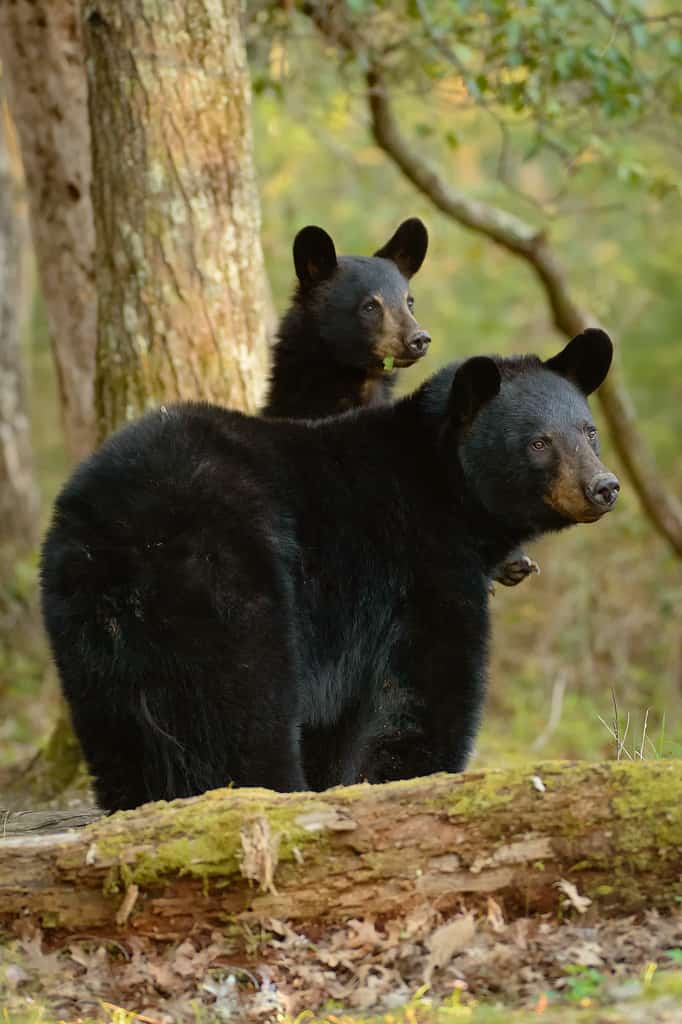
Cades Cove, an area in the Great Smoky Mountains National Park, is infamous for its large bear population.
©cchoc/iStock / Getty Images Plus via Getty Images
Great Smoky Mountains National Park is located in western North Carolina. It is famous for its natural, wild beauty and the diverse wildlife that calls this forest home. During mid-October through early November, visitors flock to this national park to see the stunning display of colorful trees including sugar maple, scarlet oak, sweetgum, red maple, and hickory. Interestingly, it is known as the “Salamander Capital of the World” and offers numerous hiking trails for visitors to explore. Black bears are attracted to this area for its rich food sources, diverse ecosystem, and substantial forest cover. It is estimated that the Great Smoky Mountains are home to 1,500 to 2,000 black bears.
2. Pisgah National Forest
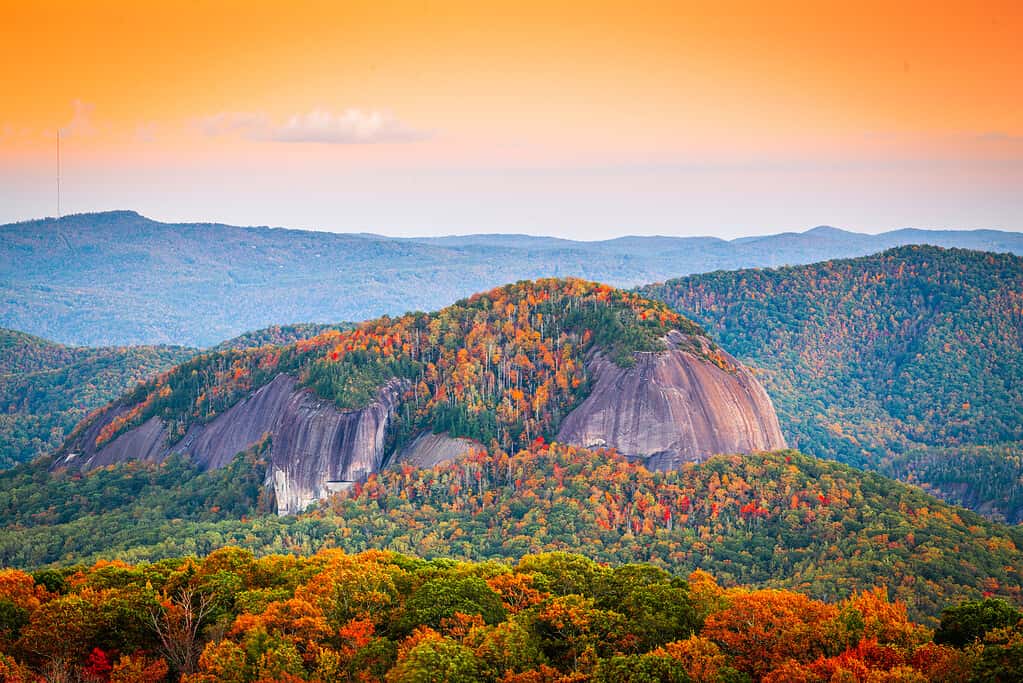
Looking Glass Rock in Pisgah National Forest is a popular destination among both locals and tourists — especially during the fall.
©Sean Pavone/iStock / Getty Images Plus via Getty Images
The Forest Service has recently issued warnings for those visiting Pisgah National Forest to keep an eye out for bears. This is because there has been an increased number of sightings across a few areas including the North Mills River region, Bent Creek Forest, Shining Rock Wilderness, and the Old Fort Picnic Area. Pisgah National Forest — situated in western North Carolina — is known for its old-growth forests, rugged mountain terrain, and numerous waterfalls. Locals and tourists alike come to enjoy the hiking, camping, fishing, and mountain biking opportunities there. Additionally, the forest provides an ideal habitat for bears thanks to its acres of untouched wilderness and ample foraging opportunities.
3. Nantahala National Forest
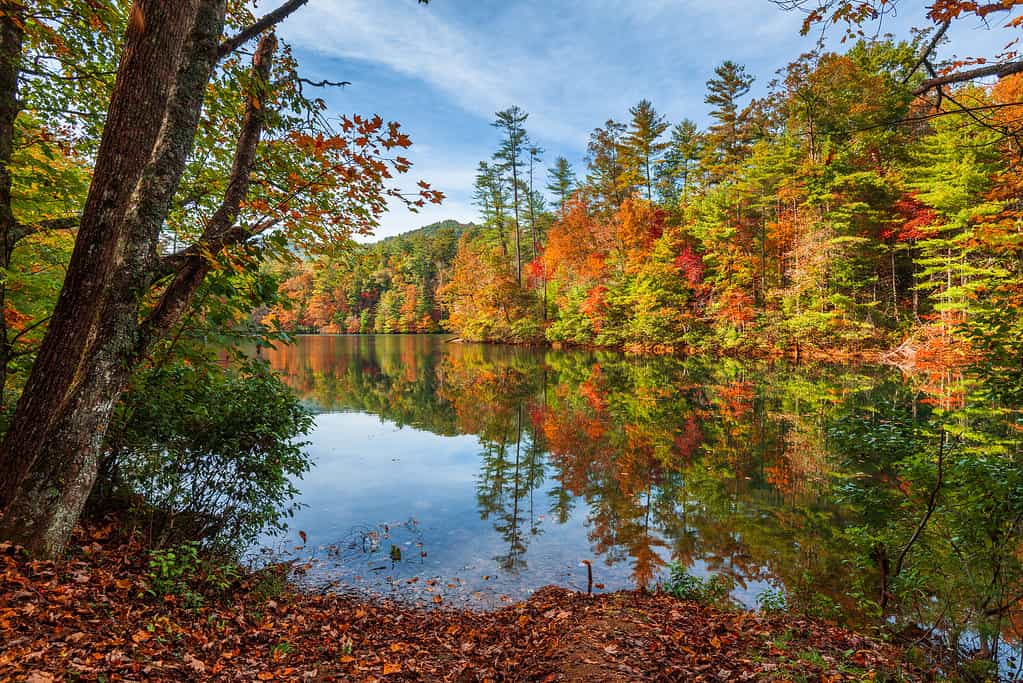
Bears prefer areas with dense forests and plentiful water sources.
©Sean Pavone/iStock / Getty Images Plus via Getty Images
Bears are frequently spotted in Nantahala National Forest but are generally more common in the spring. Panthertown, Joyce Kilmer Slickrock Wilderness, and Southern Nantahala Wilderness are the most prevalent places to encounter bears. This is because the bears are attracted to the forest’s varied terrain in these regions, which include dense forests, river valleys, and high mountain peaks. While Nantahala National Forest attracts many bears to its dense forests, it also attracts people, too! This famous wildlife area gained popularity for its gorgeous natural landscapes as well as whitewater rafting, hiking, and fishing.
4. Joyce Kilmer Memorial Forest
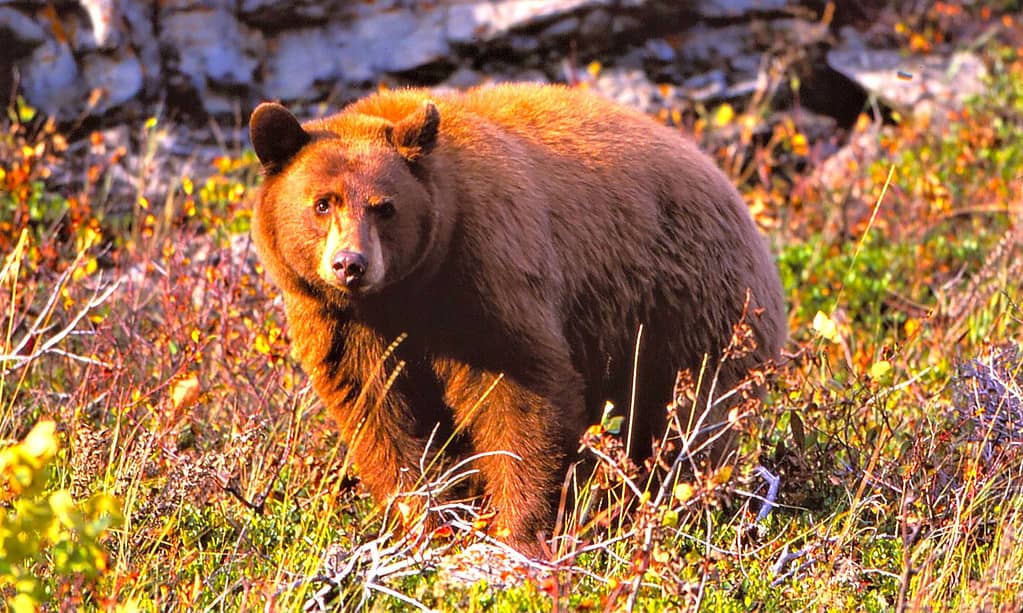
A cinnamon-colored black bear stands in tall grasses and weeds in front of a rock cliff.
©Richard Jackson/iStock / Getty Images Plus via Getty Images
Found within the Nantahala National Forest is the Joyce Kilmer Memorial Forest. It is home to many black bears, but also has wild boar, deer, red foxes, squirrels, and chipmunks. This forest is located in the western part of the state, and acts as a memorial to Joyce Kilmer — a poet who wrote the famous poem “Trees”. Renowned for its ancient and towering trees, Joyce Kilmer Memorial Forest is home to some of the largest poplars and hemlocks in the eastern United States. It is a great place for black bears to thrive because it is kept in its natural state and is only accessible by foot. Plus, this forest offers a mix of large trees, dense foliage, and a diverse range of food sources for them as well.
5. Linville Gorge Wilderness

©Yobab/Shutterstock.com
Linville Gorge Wilderness is a subsection of the Pisgah National Forest. Black bears in this area thrive in their habitat due to the area’s mountainous, rugged terrain, diverse vegetation options, and numerous water sources. It is known for the famous Linville River, as well as for its dramatic cliffs and deep gorges. Fall brings a large influx of visitors to this area for the same reasons as the bears. Linville Gorge Wilderness offers its human visitors a variety of outdoor activities in nature, including hiking, rock climbing, and camping.
6. Uwharrie National Forest
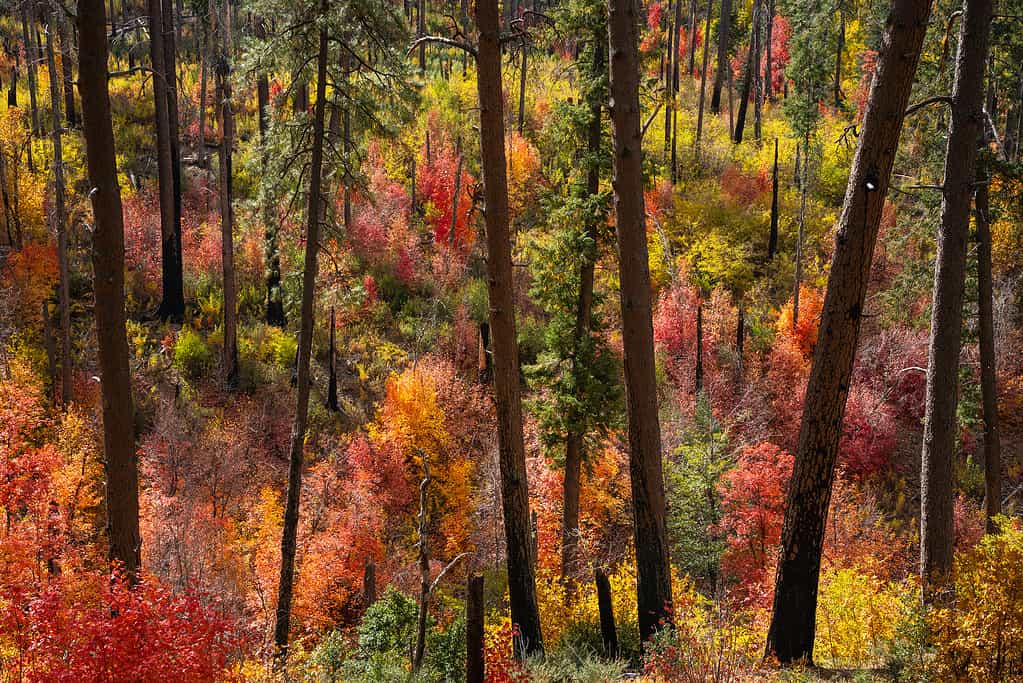
The Uwharrie National Forest is unique due to its mix of hardwoods, pines, and rocks.
©Eric Mischke/iStock / Getty Images Plus via Getty Images
The Uwharrie National Forest is located in the central parts of North Carolina and is another popular place to encounter bears. This protected land is scattered with many picturesque hiking trails, lakes, and hills. It is a popular destination in the fall, with many visitors choosing to take part in the hunting, fishing, hiking, and camping available in the area. Black bears find the Uwharrie National Forest appealing due to its mix of hardwood and pine forests, which provide them with plentiful food sources and suitable dens.
7. Croatan National Forest
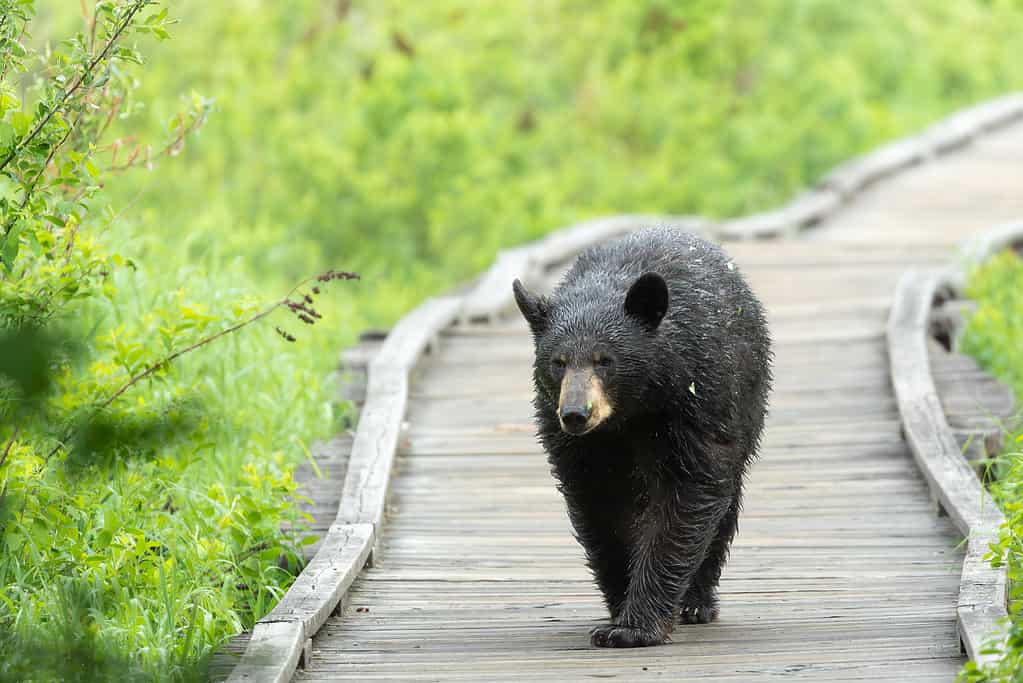
A young black bear walks on the boardwalk alone, likely searching for its next meal.
©Greg Norgaard /iStock / Getty Images Plus via Getty Images
The southwest section of the Croatan National Forest is thought of as a prime bear sanctuary. This is mainly due to its proximity to the coast and its diverse habitat, which provides its animal residents with constant access to food sources like fish and wild berries. Deer, turkey, osprey, alligators, and crabs are just a few of the many other wildlife species that inhabit this forest.
The landscape of this 160,000-acre forest is defined by its saltwater estuaries, swamps, and vast pine forests. For its human visitors, Croatan National Forest offers opportunities for boating, fishing, hiking, and wildlife observation.
8. Alligator River National Wildlife Refuge
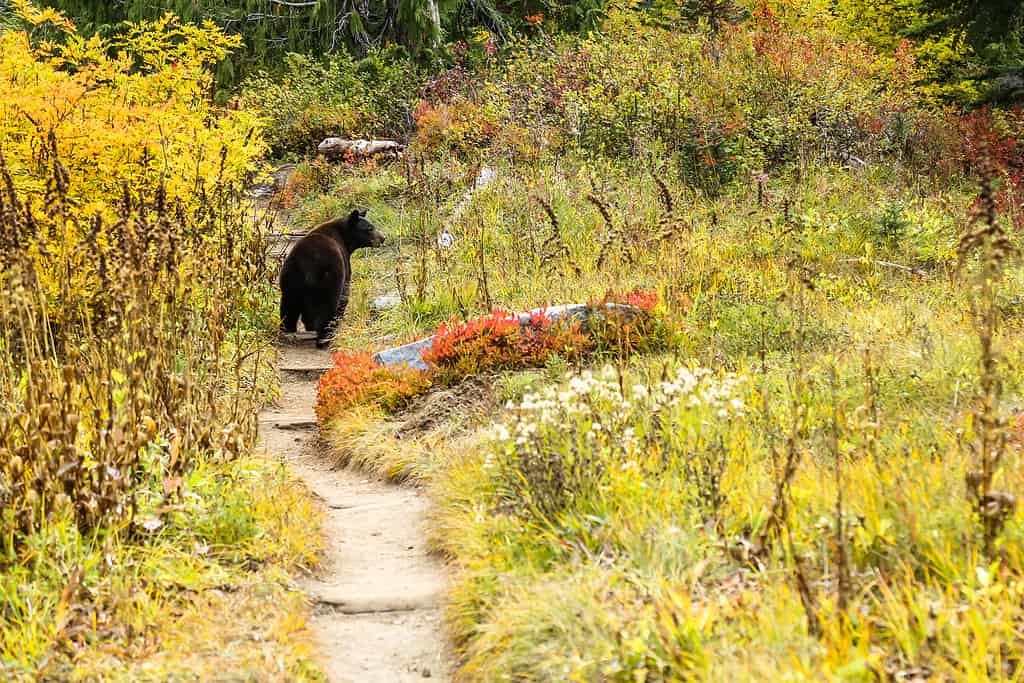
People are not the only ones who utilize the well-maintained hiking trails!
©DCrane08/iStock / Getty Images Plus via Getty Images
Found in northeastern North Carolina, the Alligator River National Wildlife Refuge is located on the Albemarle Peninsula. It is known for its diverse animal inhabitants, including black bears, red wolves, and alligators. With over 152,195 acres, this vast area is characterized by its wetlands, marshes, and forests. This makes it an ideal habitat for black bears. In the fall, popular activities among visitors to this wildlife refuge include birdwatching, animal and landscape photography, and wildlife viewing.
9. Doughton Park on the Blue Ridge Parkway
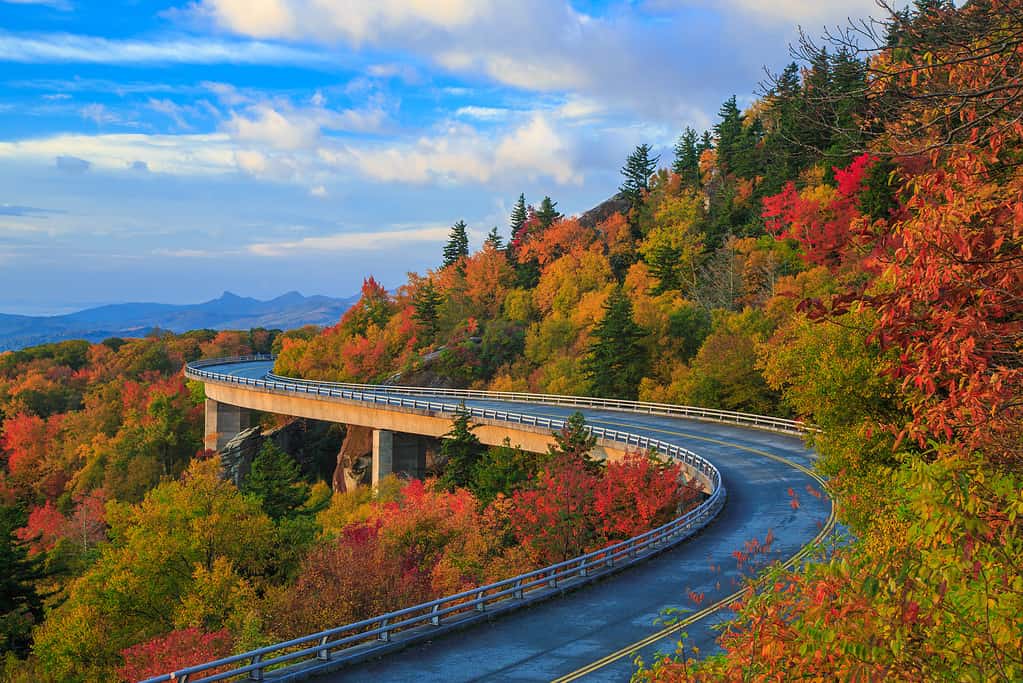
The Blue Ridge Parkway is America’s largest linear park. It is a slow-paced, relaxing scenic ride, offering some of the best views of the autumnal trees and vibrant skyline.
©jaredkay/iStock / Getty Images Plus via Getty Images
The Blue Ridge Parkway is a popular scenic drive to take during the fall months. It runs for 469 miles through 29 counties across Virginia and North Carolina. This national parkway was constructed in 1936 and begins in Rockfish Gap and ends in Ravensford, NC. While there are many stops visitors can take along the Blue Ridge Parkway, the Doughton Park stop is one of the best places to encounter bears.
Doughton Park, which lies in northwest North Carolina, is well-known for its expansive hiking trails, colorful meadows, and stunning mountain views. It offers plentiful opportunities for camping, picnicking, and wildlife spotting. Bears are often seen in this area throughout the fall, as they are attracted to the park’s abundant food sources, such as blackberries and acorns. Campsites in the area are a major attractor for black bears in North Carolina because they love the smell and taste of various human foods.
10. Pocosin Lakes National Wildlife Refuge
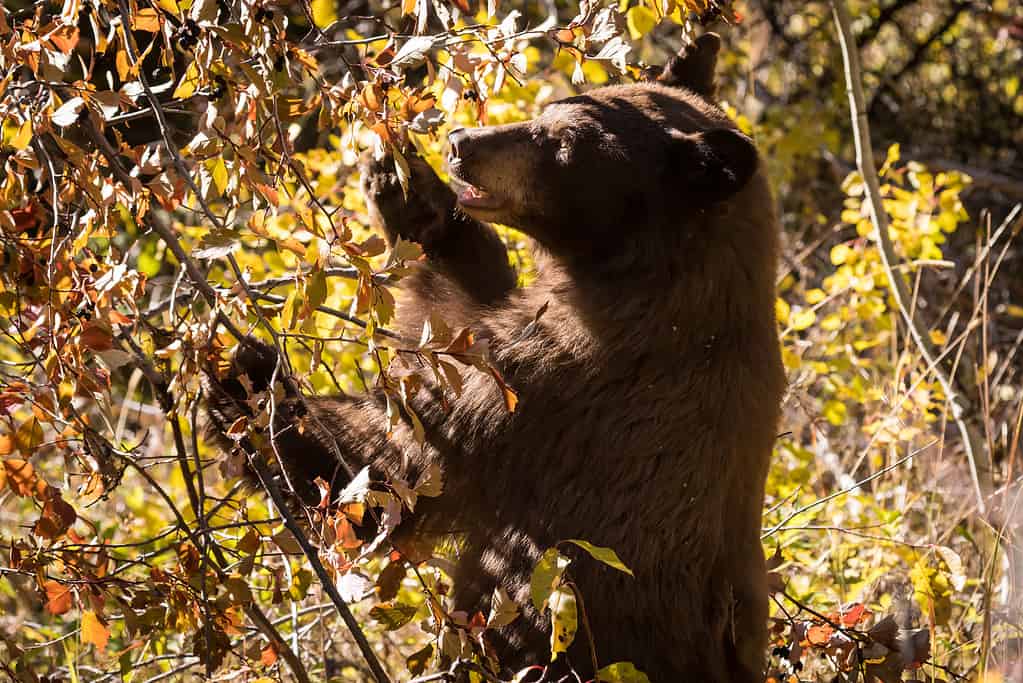
Pictured above is a cinnamon black bear foraging for huckleberries in late fall to store fat for winter.
© Wendy/Jeff Sparks/Torquemada/iStock / Getty Images Plus via Getty Images
Situated in the northeastern region of North Carolina is the Pocosin Lakes National Wildlife Refuge. It is one of the best places to encounter bears thanks to its vast “pocosins” — wetland bogs native to the surrounding area. Bears are drawn to the wetlands in Pocosin Lakes National Wildlife Refuge due to the expansive food options and its many suitable denning spots. Furthermore, this wildlife refuge is famous for its unique plant life, including carnivorous plants like the yellow pitcher plant (Sarracenia flava).
Staying Safe in Places with High Bear Populations
If you plan on visiting North Carolina this fall season, it is best to prepare yourself for a bear encounter before it happens! The first step is simply staying educated. By maintaining current knowledge of local advisories, protocols, and guidelines, you can ensure you know the best way to respond in case you find yourself face-to-face with one in the wild. Moreover, staying alert during outdoor activities is vital to avoid possible unsafe bear encounters. Making noise is also a common practice to avoid accidentally surprising a bear.
If you follow all of these tips and still encounter bears in North Carolina, make sure to remain calm, avoid sudden movements, and slowly back away from them. It might seem like common sense, but it is advised to never approach wild bears or taunt them in any way.
Overview of 10 Places You’re Most Likely to Encounter Bears in North Carolina This Fall
| Number | Location |
|---|---|
| 1. | Great Smoky Mountains National Park |
| 2. | Pisgah National Forest |
| 3. | Nantahala National Forest |
| 4. | Joyce Kilmer Memorial Forest |
| 5. | Linville Gorge Wilderness |
| 6. | Uwharrie National Forest |
| 7. | Croatan National Forest |
| 8. | Alligator River National Wildlife Refuge |
| 9. | Doughton Park on the Blue Ridge Parkway |
| 10. | Pocosin Lakes National Wildlife Refuge |
The photo featured at the top of this post is © Menno Schaefer/Shutterstock.com
Thank you for reading! Have some feedback for us? Contact the AZ Animals editorial team.







